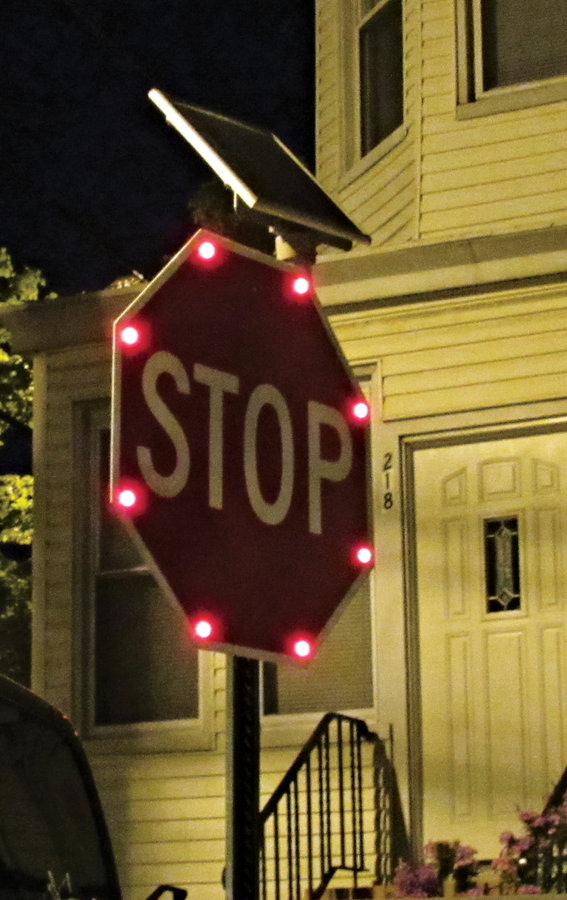After nearly a decade since northwest Hoboken was designated in need of redevelopment, the City Council approved a plan during the Aug. 5 public meeting.
With the adoption of the Western Edge Redevelopment Plan, an 11-acre series of warehouses and empty lots along the Hudson-Bergen Light Rail (HBLR) track between Ninth Street and the Fourteenth Street Viaduct will be governed under new zoning laws.
The previous zoning limited the area to industrial and office space. The new plan seeks to add residential neighborhoods, mixed-use development, and opportunities for recreation, entertainment, and shopping.
“Speaking as a resident of Hoboken, I am very excited to see that area being addressed immediately with beautiful plans I know the developers have in mind,” said Julia MacDermott during the meeting.
The City Council now moves to the next phase, negotiating a redevelopment agreement in order to flesh out the final plan. An excerpt from the plan, dated July 15, says the Western Edge plan is “the opportunity to start anew…with a vision replete with green technology, sustainability and climate change mitigation.”
Since the area was initially considered in need of redevelopment in 2007, two plans were introduced to the council and both faltered due to pressure from residents concerned with the scale of development and developers doubting the economic potential of possible projects.
After 11 months, Zimmer drafted the Western Edge plan with Maser Consulting, which was additionally ratified following a special meeting held on July 19 to hear public comments and consider 12 suggestions provided by the Planning Board.
After a number of alterations, the plan was up for a final vote on Wednesday and passed unanimously with the exception of Councilwoman Beth Mason, who was not present.
Any concerns?
“Are there any concerns we have to be aware of?” asked Councilman Michael Russo prior to the vote.
Monroe Properties’ attorney John Curley said the plan lacked transparency and had inadequate details in regard to the standards of redevelopment. He said infrastructure improvements are open to what the city can negotiate in terms of amenities.
He also reminded the council of a civil lawsuit seeking to have the 2007 Western Edge designation overturned.
“This plan is dependent upon the blight determination that was made in 2007,” said Curley. “That blight determination remains in contest in the Superior Court of New Jersey and [if thrown out], then the credit for the redevelopment plan is also thrown out.”
In response to Russo’s question, Joseph Maraziti, the city’s redevelopment attorney, dismissed the concerns, claiming the Western Edge plan was thorough beyond legal sanctions and at a satisfactory taking off point before the next phase. He did confirm, however, that if the lawsuit proves successful, the area will return to its industrial zone status.
Although the majority of the comments made by the public during the July 7 and 15 city meetings had been in favor of the plan, some locals sought to address parameters like the maximum height permitted for buildings and the size of a proposed greenbelt park that would border the light rail tracks.
Still, with the approval of the plan, many expressed relief.
“I know this is an area that we’ve been trying, for the last nine years, to develop and see some beauty come into the area,” said Joseph Covello, a Hoboken resident for the last 30 years.
“I’m really looking forward to seeing this development pass and I think that it’ll really spur that whole area coming back and being another beautiful part of Hoboken.”
The crowd applauded.
The potential of small-scale manufacturers
Ilana Preuss, the founder of consulting company Recast City, presented a study on the potential for small-scale manufacturing in Hoboken at the opening of the meeting.
Preuss, who said she has a background in city planning and worked as the former vice president for national non-profit Smart Growth America, curated a study on urban manufacturing in Hoboken.
She spent time among various local manufacturers, including Zoku, The Systems Group, Pan American Coffee, and Studio Print Works. Ultimately, she determined four major findings.
Firstly, she said it was important to engage and promote local producers by consolidating them under one group and establish a “Made in Hoboken” brand.
Preuss boosted small manufacturers, saying they required little space to operate, and 70 percent of those businesses need fewer than 20 employees.
Other study findings recommended that Hoboken establish an industrial Main Street in the north end, identify more local design producers in order to create a “design central destination,” and lastly, champion inventors and applied technology businesses.
Local resident and owner of real estate firm The Pegasus Group, Mark Villamar, said he was impressed by Preuss’s presentation.
“She speaks about what we do in Hoboken,” he said. “We try to get businesses as well as residences in town so that there’s a kind of synergy between the residential, the commercial, [and] the business sections.”
At the conclusion of Preuss’ presentation, Council President Ravinder Bhalla said, “hopefully we can have further dialogue on this issue, and…explore the possible integration of this concept into future redevelopment plans.”
New light-up STOP signs
In an effort to increase safety, the City Council approved the purchase and installation of light-up stop and yield signs.
In total the city will order 19 blinker signs, which total $28,887, and plan to install eight as early as September. The pilot program will include three stop signs at 15th and Bloomfield streets, the intersection of a three-way stop, and three yield signs at 15th and Garden streets.
Parking Utility Director John Morgan said the wait period once one orders the signs is up to three months.
“If we want to put more, we’ll have them,” he said. “I’m sure people will start calling saying their corner has a lot of accidents and they want a sign.”
